Art on the Go: Art School Line Basics: Contour vs. Gestural vs. Implied
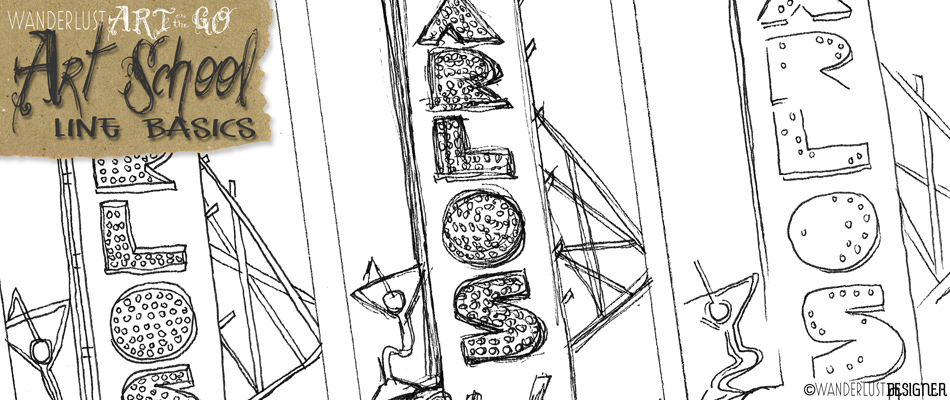
One of my goals this year is to kick off a new Art on the Go series called “Art School.” Although I attended art school many, many years ago, like any profession, it’s always great review to go back to the basics and brush up your skills. I hope in going through my journey I can also inspire you to pick up your pencil, pen, or brush and join in. There are so many wonderful things to draw either at home or on a trip, so time to get started!
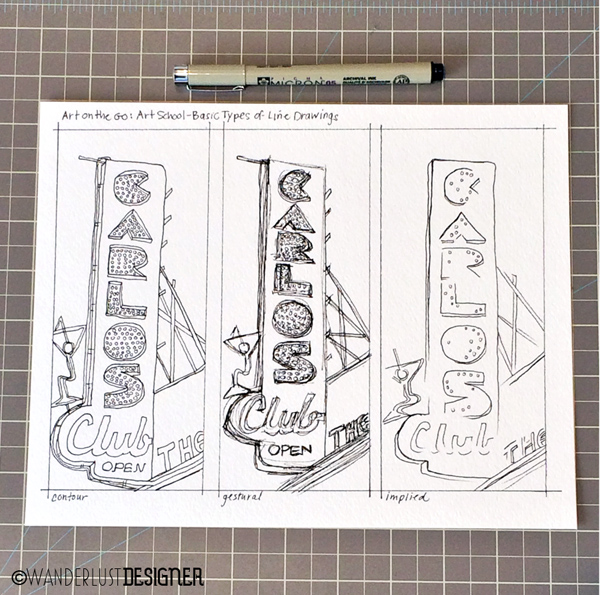
Today’s “Art School” lesson will be studying 3 basic types of line drawing; contour, gestural and implied. These lines are the basis to almost all drawing. Each type improve your eye-hand coordination skills and are building blocks to so many different art possibilities. I chose one subject, an art deco marquee close to where I live to illustrate the differences of these 3 mark making techniques.
Gestural Line Drawing
If you are new to art, gestural drawing is a great place to start. It is free form and liberating to just “scribble” what you see. It is also a great style to use to keep loose with your art work and not worry about details. Stylistically it can be perfect in capturing the essence of a location or scene. It can also be used as a building block to start a contour drawing (see below.) Lastly, it is the perfect style to use for moving subjects, since the gestural strokes lend themselves naturally to motion.

To start a gestural drawing, quickly sketch the outer boundaries of the forms/shapes in your scene. From there, loosely begin to draw more defining shapes within the scene. Don’t worry about overlapping lines, or perceived “mess ups,” just keep sketching. Gestural drawings tend to be quick, which make them perfect for any sketchbook artist on the go. Once you are satisfied, move on to another drawing, or use watercolor or color pencils to add some color if you’d like.
Contour Line Drawing
Contour drawing is a bit more intentional mark making than gestural. The emphasis of a contour drawing is typically the outline of the objects/subjects in your scene. The difference between purely an outline drawing and a contour drawing is that the intention of the contour is to not only define shape but also volume. This is easily achieved by drawing dimensions and/or overlapping of objects accurately.

If you are new to contour drawing, it can be intimidating to make marks that may not be perfect. This should not deter you from trying, though! A great way to ease into contour drawing is to first start with gestural marks. Once you have lightly created enough strokes for a feeling of your subject, begin to use a more a intentional line to create your contour drawing. The more practice of this technique, the more confident you will be to just create the single contour line by itself.
Implied Line Drawing
An implied line is simply an unfinished line. Our brain can do amazing things when looking at a drawing, even complete lines and shapes that aren’t there. Implied line drawings allow the viewers to use their own intuition to complete the piece. Implied lines may also be a great way to suggest movement of a subject.

To create an implied line drawing, carefully look at your subject and decide what aspect is necessary to draw and what elements may be left out for the viewer to contemplate. Start making those priority lines on your drawing. Stay minimal, since you can always add more lines as you work. You may not need the extra line definition at all.
Art School Assignment
Using the above instruction, create your own set of gestural drawings, contour drawings and implied line drawings. Start with a simple shape or object that you are familiar with. As you work through each style, and get more comfortable, pick more complicated subjects or outdoor scenes. The more you draw, the better you will get. Perhaps after some practice, you will find you prefer one style over the other and it may lead to your very own signature line style.
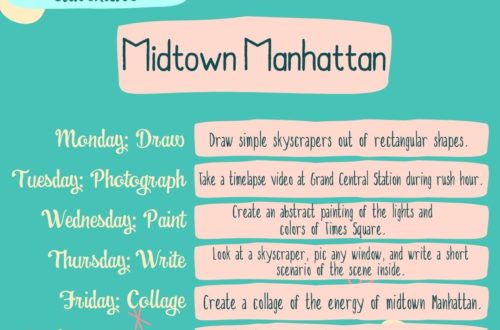
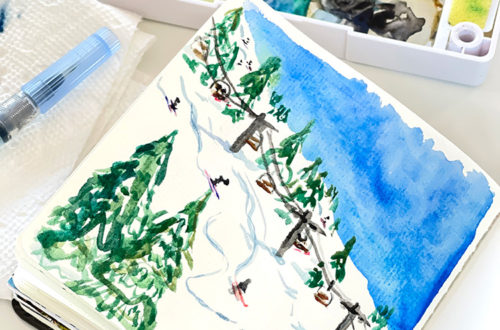
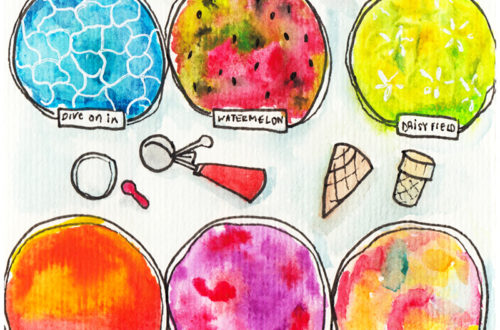
One Comment
Pingback: